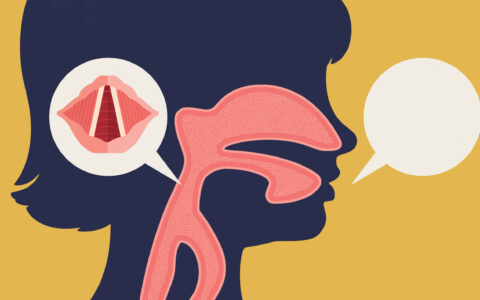Severe headaches affect approximately one out of every six Americans. Traditionally, these headaches are thought to originate inside the brain.
In recent decades, however, researchers uncovered a subset of headaches that originate outside the brain, caused by compression of trigeminal or occipital nerves. These nerves can become entrapped by muscle, fascia, blood vessel or bone.
Salam A. Kassis, M.D., an assistant professor in the Department of Plastic Surgery at Vanderbilt University Medical Center, is one of a handful of specialists around the country trained in nerve-release procedures to relieve severe headaches. His team’s experience with more than 400 nerve-release procedures over three years has yielded excellent outcomes in headache improvement or cessation.
“As successful as this surgery is, there are still very few centers offering it today.”
“As successful as this surgery is, and even with the endorsement of the American Society of Plastic Surgeons, there are still very few centers offering it today,” Kassis said. “We are rapidly growing our multidisciplinary clinic to offer it to more headache sufferers who are known candidates, while also addressing the wider band of people with pain who are not now considered nerve-release candidates.”
Kassis’s clinic at Vanderbilt includes neurologists, interventional pain specialists, nerve surgeons and partnering neurosurgeons.
Candidates for Decompression

In the past few decades, options for treating extracranial headaches have included nerve blocks, neuromuscular blockers such as Botox, radiofrequency ablation, steroid shots, nerve stimulators and medications. Now, nerve decompression is poised to top the arsenal.
“These nerve decompression procedures were developed because we have the tools and have developed the means of identifying specific sites that are peripheral to the skull,” Kassis said.
He says the best indicator that somebody will have a positive response to nerve release is their ability to localize their pain and their response to minimally invasive diagnostic tests like nerve blocks.
“If they press on a particular spot in their neck or face when they have a headache, it is going to be tender there,” Kassis said. “The pain may sometimes get better, but there is always some sensitivity at that spot, and sometimes it grows into a full-blown severe headache.”
Low Risks, High Rewards
The two-hour procedure is done on an outpatient basis and involves removing the tissue that is compressing the nerve, similarly to the release effected in carpal tunnel surgery. As many as 92 percent of patients report a 50-percent improvement in their headaches, and about 35 percent achieve sustained elimination of headaches. When performed by a trained surgeon, the procedure leaves well-hidden scars and carries a low risk of adverse events. Recovery time is two to four weeks, Kassis says, depending on the type of surgery performed.
“Every patient is unique. I may need to widen a foramen, remove an artery that winds around the nerve, or cushion the nerve with fat tissue.”
“Every patient is unique, and can require significant work up,” he said. “Besides the common step of removing muscle tissue and fascia, I may need to widen a foramen, remove an artery that winds around the nerve, or cushion the nerve with fat tissue.”
Intracranial Options
Headache pain that strikes in the absence of a localized trigger site in the face or neck likely originates inside the brain, Kassis said.
These intracranial headaches are typically treated with medications, lifestyle modification, physical therapy and psychological support. However, a few patients are candidates for microvascular decompression at the nucleus of the trigeminal nerve. At Vanderbilt, these are performed by a partnering neurosurgeon.
Granular MRI for Diagnostics
To better diagnose patients suffering from nerve compression – of intracranial or trigeminal origin – the Vanderbilt team is testing novel MRI approaches to image the small nerves involved in these procedures and try to identify the compression points before surgery.
“Let’s say you have an entrapped occipital nerve. If you do a standard MRI, it can look normal. We are investigating how well we can see these and other nerves and surrounding tissues,” Kassis said.
The new MRI is only being used in study patients at this point.
“If, over time, we find out that the advanced MRI is able to accurately visualize what we see during surgery, this can become a reliable diagnostic test to identify patients with extracranial cause for their headaches and hence improve the outcomes of surgery,” Kassis said.





